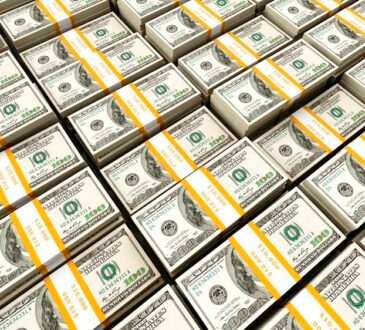- US Dollar holds its ground at the end of the week, remains in consolidation mode.
- Fed officials remain cautious on inflation, as Durable Goods Orders miss market expectations.
- Markets continue to see two cuts by year-end.
The US economy remains robust with GDPNow tracking third-quarter growth at 3.4%. The strong economic outlook might push the Federal Reserve (Fed) to adopt a more cautious stance. Investors, meanwhile, are confident of two cuts by the end of 2024.
The US economy remains robust with the Atlanta Fed’s GDPNow model tracking Q3 growth at 3.4% and the New York Fed’s Nowcast model projecting 3.0% growth for Q3 and 2.6% growth for Q4.
Daily digest market movers: US Dollar with gains, while Goods Orders fall below estimates
- Durable Goods Orders in the US declined by 0.8% MoM in September, slightly better than market expectations of a 1% decline.
- Excluding Transportation, New Orders increased by 0.4%. Excluding Defense, New Orders decreased by 1.1%.
- Transportation equipment, which has been declining for three of the last four months, contributed to the overall decrease in Durable Goods Orders.
- On the positive side, the Michigan Consumer Sentiment index rose to 70.5, beating expectations and helping the USD avoid losses.
DXY technical outlook: DXY breached 200-day SMA, now consolidating
The DXY index breached the 200-day SMA this week, but over-extension forced a retreat. The index is now expected to consolidate, correcting overbought conditions.
Despite gains by the end of the week, the Relative Strength Index (RSI) and Moving Average Convergence Divergence (MACD) indicators remain dangerously close to the overbought territory, so traders should consider eventual losses for the index. Supports lie at 104.50, 104.30 and 104.00, while resistances stand at 104.70, 104.90 and 105.00.
US Dollar FAQs
The US Dollar (USD) is the official currency of the United States of America, and the ‘de facto’ currency of a significant number of other countries where it is found in circulation alongside local notes. It is the most heavily traded currency in the world, accounting for over 88% of all global foreign exchange turnover, or an average of $6.6 trillion in transactions per day, according to data from 2022. Following the second world war, the USD took over from the British Pound as the world’s reserve currency. For most of its history, the US Dollar was backed by Gold, until the Bretton Woods Agreement in 1971 when the Gold Standard went away.
The most important single factor impacting on the value of the US Dollar is monetary policy, which is shaped by the Federal Reserve (Fed). The Fed has two mandates: to achieve price stability (control inflation) and foster full employment. Its primary tool to achieve these two goals is by adjusting interest rates. When prices are rising too quickly and inflation is above the Fed’s 2% target, the Fed will raise rates, which helps the USD value. When inflation falls below 2% or the Unemployment Rate is too high, the Fed may lower interest rates, which weighs on the Greenback.
In extreme situations, the Federal Reserve can also print more Dollars and enact quantitative easing (QE). QE is the process by which the Fed substantially increases the flow of credit in a stuck financial system. It is a non-standard policy measure used when credit has dried up because banks will not lend to each other (out of the fear of counterparty default). It is a last resort when simply lowering interest rates is unlikely to achieve the necessary result. It was the Fed’s weapon of choice to combat the credit crunch that occurred during the Great Financial Crisis in 2008. It involves the Fed printing more Dollars and using them to buy US government bonds predominantly from financial institutions. QE usually leads to a weaker US Dollar.
Quantitative tightening (QT) is the reverse process whereby the Federal Reserve stops buying bonds from financial institutions and does not reinvest the principal from the bonds it holds maturing in new purchases. It is usually positive for the US Dollar.





